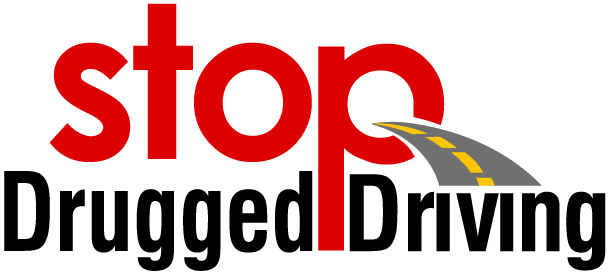Areas for More Drugged Driving Research
Drugged driving research is essential but should not hinder policy actions to reduce this serious public safety problem. Research is needed particularly in the following areas:
Shock Trauma Centers
A 2005 study showed high prevalence of potentially impairing substances among seriously injured drivers admitted to a Level 1 Maryland shock-trauma center. Notably 65.7% of drivers were positive for alcohol and/or drugs. As shown at right 25% were positive for more than one substance. Over half (51%) were positive for drugs other than alcohol and 25% were positive for marijuana.
Shock trauma centers can serve as useful resources for new studies to monitor and track the prevalence of drugs and alcohol among crash-involved drivers. In order to keep track of the extent of alcohol- and drug-impaired driving in the United States, we need at least 6-10 dispersed shock trauma centers to continuously test all seriously injured divers for alcohol and other drug use and to report these results on a timely basis.
Fatally Injured Drivers
The Fatality Analysis Reporting System (FARS) is a national census of data on fatal injuries suffered in motor vehicle crashes. The data collected in FARS is vital for tracking the drugged driving problem, but it is incomplete. A 2016 study by Slater, et al. reviewed the limits of FARS data and made helpful recommendations:
There is a need to strengthen the data-gathering fields in FARS to collect more useable information about drug use. For example, FARS should collect: 1) which drugs were tested for, 2) the quantitative results, 3) the time between the crash and collection of the biological specimens, and 4) whether an autopsy was conducted. Finally, FARS analysts should endeavor to obtain a copy of the toxicology report rather than rely on word of mouth information or summaries of drug findings in the police report, which are often incomplete. Until many of the aforementioned improvements are made, FARS data users should continue to be cautious about the limitations of using available drug testing data when making comparisons over time and across states and driver types.
To make FARS testing and reporting uniform as well as systematic will require changes to federal law and federal funding. The improved FARS system must require alcohol and other drug testing of all fatally injured drivers in the country using a standardized protocol. The improved FARS system is essential for the nation to monitor alcohol and other drug threats on our roads and highways.
Drug Testing Technology
The fact that there is not and never will be a 0.08 BAC equivalent for specific drugs must not prevent the development of new testing technology to identify recent drug use. Oral fluid (i.e., saliva) testing for drug use is becoming more common and is preferred by some to blood and urine testing. IBH also encourages the development of drug testing methods with short windows of detection, including for example, breath testing for recent marijuana use. The current drug testing technology is excellent and needs to be more widely used.
Recommended Reading + Resources
The following is not a comprehensive list of related reading and resources but serves as a starting point for more information on these drugged driving issues. Read more about the problem of drug-impaired driving. Also be sure to also check out the Resources page.
Arnold, L. S., & Scopatz, R. A. (2016). Advancing Drugged Driving Data at the State Level: Synthesis of Barriers and Expert Panel Recommendations. Washington, DC: AAA Foundation for Traffic Safety.
Berning, A., & Smither, D. D. (2014). Understanding the limitations of drug test information, reporting, and testing practices in fatal crashes. Traffic Safety Facts Research Note. DOT HS 812 072. Washington, DC: National Highway Traffic Safety Administration
DuPont, R. L., Logan, B. K., Shea, C. L., Talpins, S. K. & Voas, R. B. (2011). Drugged Driving: A White Paper. Institute for Behavior and Health, Inc. Drugged Driving Committee. Rockville, MD: Institute for Behavior and Health, Inc.
Governors Highway Safety Association and Foundation for Advancing Alcohol Responsibility. (2018). Drug-Impaired Driving: Marijuana and Opioids Raise Critical Issues for States. Washington, DC: GHSA.
Governors Highway Safety Association and Foundation for Advancing Alcohol Responsibility. (2017). Drug-Impaired Driving: A Guide for What States Can Do. Washington, DC: GHSA.
Kay, G. G., & Logan, B. K., (2011). Drugged Driving Expert Panel Report: A Consensus Protocol for Assessing the Potential of Drugs to Impair Driving. (DOT HS 811 438). Washington, DC: National Highway Traffic Safety Administration.
Slater, M. E., Castle, I. P., Logan, B. K., & Hingson, R. W. (2016). Differences in state drug testing and reporting by driver type in U.S. fatal traffic crashes. Accident Analysis & Prevention, 92, 122-129.
Walsh, J. M., et al. (2004). Epidemiology of alcohol and other drug use among motor vehicle crash victims admitted to a trauma center. Traffic Injury Prevention, 5(3), 254-60.
Walsh, J. M., Verstraete, A. G., Huestis, M. A., & Mørland, J. (2008). Guidelines for research on drugged driving. Addiction, 103(8), 1258-1268.
Walsh, J. M., et al. (2005). Drug and alcohol use among drivers admitted to a Level-1 trauma center. Accident Analysis & Prevention, 37(5), 894–901.
To request materials email the Institute for Behavior and Health at ContactUs@IBHinc.org.

